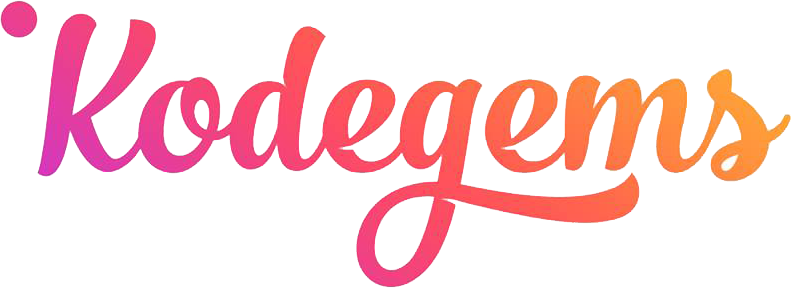Contents
Introduction
The world of web design is ever-changing and evolving. What was in vogue a few years ago may not be relevant anymore. As we step into 2023, there are several emerging web design trends that are already making waves in the industry. In this article, we’ll explore the latest web design trends for 2023 that you should know about.
READ: Why Webflow is the Best Choice Over WordPress for Your Website
1. Dark Mode
Dark mode has been around for a while, but it’s gaining more popularity and prominence in 2023. Many users find dark mode visually appealing and easy on the eyes. The dark background creates a high contrast between text and images, making them more readable. Moreover, dark mode is ideal for devices with OLED screens since it saves battery life.
2. 3D Graphics and Animations
Advancements in technology have made it possible to create stunning 3D graphics and animations. More websites are embracing this trend to create immersive experiences that engage visitors. 3D graphics and animations add depth and dimension to web pages, making them more memorable and visually striking.
3 Bold Typography
Typography plays a crucial role in web design, and in 2023, we expect to see more websites using bold and attention-grabbing fonts. Big and bold typography can help emphasize key messages and create a strong visual hierarchy. Additionally, custom typography can help a website stand out and convey a brand’s personality.
READ: What is Vanilla WordPress? Benefits and Features
4. Neumorphism
Neumorphism is a relatively new design trend that’s quickly gaining popularity in 2023. It’s a design style that creates a soft, 3D effect, making the elements on a web page look like they’re popping out. Neumorphism is characterized by subtle shadows, gradients, and highlights that give the illusion of depth.
5. Hand-Drawn Illustrations
Hand-drawn illustrations can add a personal touch to a website, making it feel more unique and authentic. This trend is ideal for websites that want to convey a friendly and approachable vibe. Hand-drawn illustrations can also help tell a story or convey complex concepts in a simple and engaging way.
6. Minimalism
Minimalism has been a popular design trend for several years, and it’s not going anywhere in 2023. This design style emphasizes simplicity, clean lines, and plenty of whitespace. Minimalism can create a sense of elegance and sophistication while also making a website feel more user-friendly and intuitive.
READ: Creating a High-Converting Landing Page: Proven Tips and Strategies
7. Voice User Interface
Voice user interface (VUI) technology is becoming more prevalent, and we expect to see more websites integrating VUI in 2023. VUI allows users to interact with a website using voice commands, making it easier to navigate and access information. VUI can also make a website more accessible for people with disabilities or those who prefer a hands-free approach.
8. Mobile-First Design
Mobile-first design has been a best practice for several years, but it’s still worth mentioning in 2023. With more people accessing the internet via mobile devices, it’s essential to design websites that are optimized for smaller screens. Mobile-first design prioritizes simplicity, speed, and usability to create a seamless experience across devices.
9. Gradients
Gradients have been around for a while, but they’re making a comeback in 2023. This design trend involves blending two or more colors to create a smooth transition. Gradients can create a sense of depth and dimension, and they can also add visual interest to an otherwise plain background.
10. Dynamic Scrolling
Dynamic scrolling involves creating web pages that change as users scroll down. This design trend can create a sense of interactivity and engagement, encouraging users to explore a website further. Dynamic scrolling can also help break up long-form content into more digestible chunks, making it easier to read.
READ: 7 Effective Ways to Increase Your Website’s Conversion Rate
Conclusion
In conclusion, web design is constantly evolving, and it’s essential to stay up-to-date with the latest trends to create modern and engaging websites. As we step into 2023, we expect to see more websites embracing dark mode, 3D graphics and animations, bold typography, neumorphism, hand-drawn illustrations, minimalism, voice user interface, mobile-first design, gradients, and dynamic scrolling.
It’s worth noting that while these trends are popular, it’s crucial to consider the needs and preferences of your target audience. Not every trend will be suitable for every website or brand. It’s essential to strike a balance between aesthetics and functionality, and ensure that the design choices align with your brand identity and goals.
Moreover, it’s vital to prioritize user experience (UX) in web design. A visually stunning website is great, but if it’s challenging to navigate or doesn’t provide the necessary information, visitors will quickly leave. UX design involves creating websites that are easy to use, intuitive, and provide a seamless experience across devices.
Finally, it’s important to keep in mind that web design trends are not set in stone. What’s popular today may not be tomorrow. As technology advances and user preferences change, we’ll continue to see new design trends emerge. As a web designer, it’s crucial to stay flexible and adaptable, and continuously learn and evolve with the industry.
READ: The Power of A/B Testing for Landing Pages
FAQ:
Q: What are the latest web design trends for 2023?
A: The latest web design trends for 2023 include dark mode, 3D graphics and animations, bold typography, neumorphism, hand-drawn illustrations, minimalism, voice user interface, mobile-first design, gradients, and dynamic scrolling.
Q: Do I have to follow all the web design trends for 2023?
A: No, it’s not necessary to follow all the web design trends for 2023. It’s important to consider the needs and preferences of your target audience and ensure that the design choices align with your brand identity and goals.
Q: Why is user experience important in web design?
A: User experience (UX) is crucial in web design because it impacts how visitors perceive and interact with your website. A good UX design involves creating websites that are easy to use, intuitive, and provide a seamless experience across devices. Prioritizing UX can lead to increased user engagement and conversion rates.
I Design and Develop SEO optimized Websites that help Businesses and E-commerce stores to generate 5X more REVENUE ⭐ Designed 500+ Websites || WordPress Developer || Web Designer 🏆 Top Rated On UPWORK


